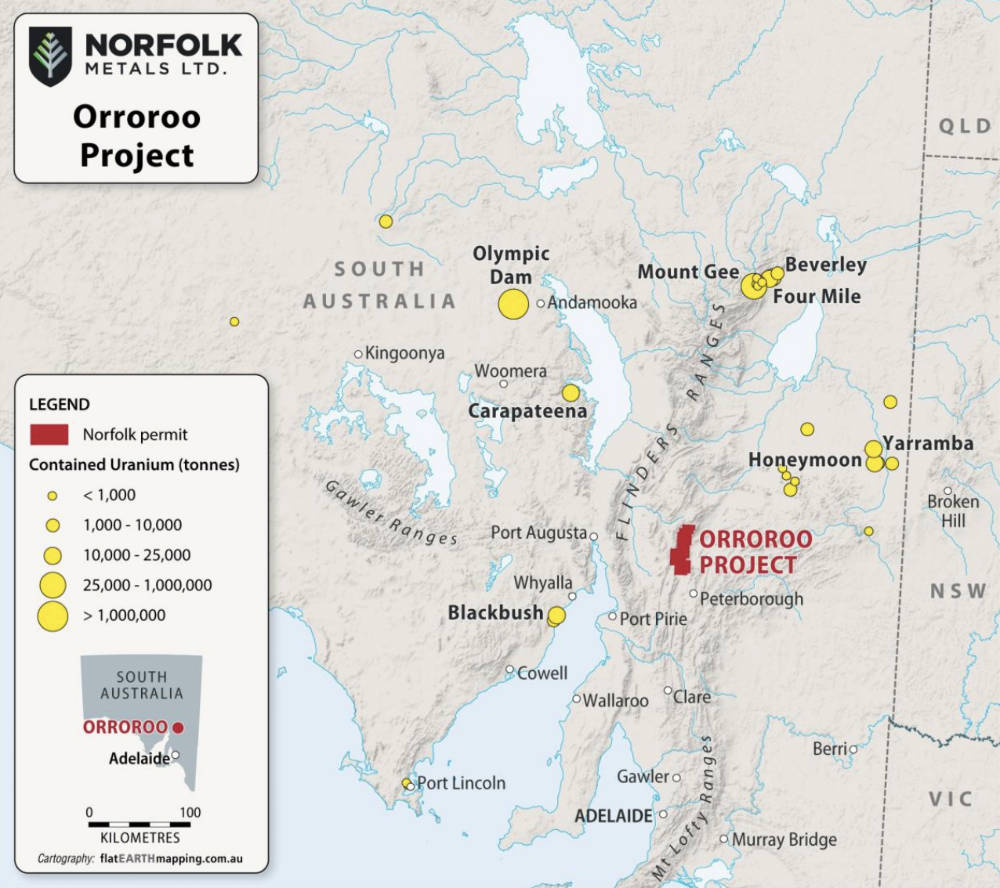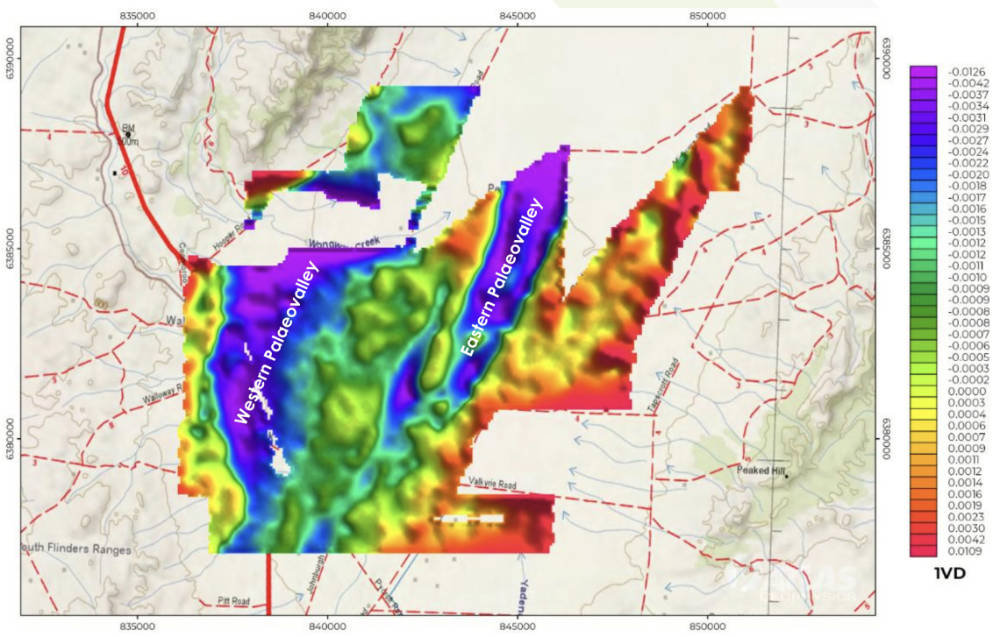Cashed up explorer Norfolk Metals is perfectly positioned to benefit from yellowcake’s revival
Mining
Mining
Special Report: As uranium sentiment continues to improve, investors have flocked back to the sector in search of the right buy. There are precious few exploration stocks with the combination of project, funds and tight capital structure like Norfolk Metals.
Uranium is in a new bull market that has plenty of room to run, according to Sprott Asset Management, which had launched a physical uranium trust back in 2021 to buy up swathes of the energy metal, taking it out of market circulation.
Its bet on the revival of yellowcake proved prophetic as the transition towards zero carbon emissions and the willingness of governments to support the nuclear energy industry led to a widening supply-demand gap.
While the price of uranium — which continues to breeze through US$80/lb, a 15 year high — has led to dormant mines being re-opened, years of underinvestment all but ensures that there will be a long-term shortfall of supply.
This has put uranium juniors on the radars of investors looking for the next big thing.

While explorers with either a focus on uranium or with uranium exposure are starting to emerge from the woodwork, there aren’t too many sub-$10m uranium plays (or explorers as a whole) that are cashed-up, have a tightly held capital structure, are surrounded by large operating or soon to be operating mines in a tier 1 jurisdiction, and ready to drill.
Norfolk Metals (ASX:NFL) happens to tick every one of those boxes.
It has a market cap of ~$7m, ~$4m in the bank, and +40% of its 30.3 million shares are held by the same holders from when it was listed in March last year.
It is also moving quickly towards maiden drilling at its Orroroo project near the Honeymoon uranium mine in South Australia.
Speaking to Stockhead, executive chairman Ben Phillips questioned what investors were looking for in the uranium sector.
“Are you going to invest in someone that’s about to produce like Honeymoon, or someone in Tanzania or Kazakhstan?” he asked.
“Or would you choose a company’s that’s leveraged to exploration, has a project with uranium occurrences in one of the world’s best jurisdictions surrounded by large operating or soon to be operating mines, enterprise value of less than $5m and about to start drilling?”
The timing is also perfect with Phillips noting spot prices of US$80/lb, and rising.
“That’s huge. The thematic is very strong and like any of these thematics, are great to invest in at the beginning of an upward trend rather than the end.”
The Orroroo uranium project in South Australia, a state recognised for its high uranium prospectivity and proven track record for uranium mining with strong government support, sits at the heart of NFL’s efforts to become a significant player in the sector.
It comprises two granted exploration licences EL6552 and EL6814 that cover a total area of 659km2, essentially covering the entire Walloway Basin, an elongate Tertiary Basin which has the same aged sediments as the Frome Embayment, which hosts several commercially viable uranium deposits such as Honeymoon and Beverley.
Orroroo is sparsely populated with less than 30 wells that were drilled by coal gasification hopeful Linc Energy between 2010-12 that found occurrences of gamma anomalies, which led the company to peg the tenements.
“We only tested three of the wells and all of them came up positive for uranium, so we are three for three on the wells we tested,” Phillips said.
“The depths range from 100m to 150m deep and it will be suitable for in-situ recovery if the soil is permeable enough and if we have high enough grade.”
ISR involves the injection of a solution of oxygen, hydrogen peroxide, or other oxidising agent in water into the underground zone that contains the ore.
This solution dissolves the uranium and is pumped back to surface for uranium recovery through an ion-exchange column.
By not requiring the removal of the overlying rock, in situ mining causes less environmental disturbance at the surface while reducing the potential for radiation exposure.
Adding further interest, Phillips noted that the mineralisation appeared to have a flat tabular occurrence.
“You don’t just get uranium occurrences 2-3km apart from each other squished between 50m of clay above and below. The uranium has to get there, it has to permeate from the Flinders Ranges west,” he said.
Phillips added that while the company did not yet know what grades are present – that will be tested by coming drilling – the surface areas has to be substantial as the distance is so large.

To support its exploration activities at Orroroo, the company has brought in heavy firepower in Mark Couzens, a specialist uranium geologist with experience exploring for sediment-hosted uranium at Beverly and Four Mile in South Australia, Bennett Well in WA, and in Argentina.
He has overseen the drilling of more than 1,000 holes throughout Australian and Argentinean sandstone hosted uranium prospects.
Phillips said Couzens was visibly excited by Orroroo during a site visit, following which he developed a paleochannel model that was built of his field observations, a REDOX model from Linc Energy as well as geophysical models from the company’s gravity and PFN tools.
This model takes into account the observation that the uranium occurrences noted to date are all 50-100m south of modern day creeks.
“If he’s right, then we have got a prospective 20km plus of paleochannels to start with the rivers that we do know of,” Phillips said.
“What’s more he has elected to take 50% of his pay in shares rather than cash, which is always a nice sign with geologists as it shows a lot of confidence.”
Gravity surveying has delineated two distinct palaeovalleys, though the focus is currently on the western palaeovalleys which hosts all three of the known uranium occurrences.
NFL is also keen to make a difference for Orroroo town, which is north of the Goyder line and has a population of just 660 people that is hugely reliant on a major trucking route.
The Goyder line is the divide where South Australian farming goes from quite lush and green in the south to quite dusty to the north.
Phillips – who has spent the last 12 months working with private freehold landowners, ie; farmers that have been there for generations – noted that the company would soon be drilling in their backyard.
“The opportunity we have, if we are successful, is not just about making money for shareholders and finding uranium, you have to look at what this would actually do for a quintessential small country town of 660 people,” he says.
“We sponsor the local childcare centre, footy club, golf club, international women’s rural day, we do everything we can to help the community as this stage, but if we are successful, it is going to provide so much opportunity for Orroroo in terms of community, environment and the social side.”
Couzens will continue to lend his expertise to NFL by leading the first phase of drilling at Orroroo, which will test the three proven uranium occurrences and their associated paleochannel structures in the Western Channel.
Up to 20 rotary air blast holes will be drilled down to 160m deep within the approved areas.
NFL has already received a letter of approval from the South Australian Department of Energy and Mining that paves the way for the maiden drilling to go ahead with the final requirement being to enter into a bond.
“Modern day creeks and subsurface paleochannels could both track a west to east path that likely originates from faulting in the Adelaidean Basement,” Phillips says.
“If it is a successful program at Orrorroo, I think we will be really dialling up our community engagement, the awareness of uranium in the town of Orroroo and the engagement of stakeholders that own property where successful drillholes are found.
“We will be looking at acquisitions of other uranium projects. We will really put the throttle down.”
This article was developed in collaboration with Norfolk Metals, a Stockhead advertiser at the time of publishing.
This article does not constitute financial product advice. You should consider obtaining independent advice before making any financial decisions.